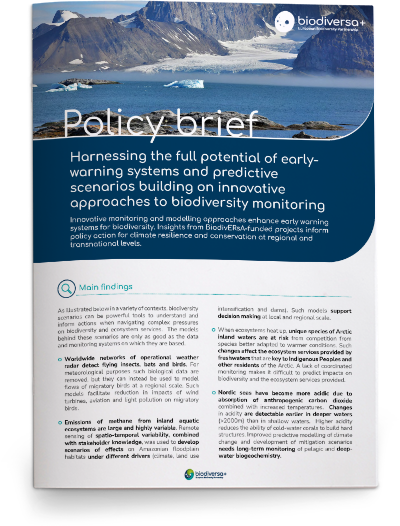Policy brief: “Harnessing the full potential of early-warning systems and predictive scenarios building on innovative approaches to biodiversity monitoring”
Ecosystems are shaped by complex, large-scale factors, yet monitoring remains fragmented and often limited to national or local scales, hindering broad-scale prediction. Drawing on research from ACCES, ARCTIC-BIODIVER, BONDS, GloBAM, & REEF-FUTURES, this brief explores how innovative monitoring tools (such as radar tracking, remote sensing, and ecosystem modelling) are strengthening early warning systems (EWS) to anticipate and manage biodiversity and climate-related risks.
Key takeaways include:
- Bridging knowledge systems by integrating local, scientific, and policy knowledge to enhance early warning relevance and uptake.
- Co-designing EWS with stakeholders to ensure usability, trust, and legitimacy.
- Strengthening policy and regional coordination to translate robust data into timely action.
- Ensuring early warnings are clearly communicated and linked to institutional response capacities.
Specific recommendations include:
- Leveraging weather radar networks by using data on flying insects, bats, and birds (typically filtered out in meteorological analyses) to model migratory flows and reduce risks from wind turbines, aviation, and light pollution.
- Combining remote sensing with local knowledge to monitor methane emissions from inland waters over time and space, informing floodplain management scenarios under varying environmental drivers.
- Coordinating Arctic monitoring to predict and manage the impact of warming ecosystems on unique inland water species and the ecosystem services vital to Indigenous Peoples and local communities.
- Establishing early detection systems and sustain long-term biogeochemical monitoring in the Nordic Seas and North Atlantic to track deep ocean stressors relevant to biodiversity..




